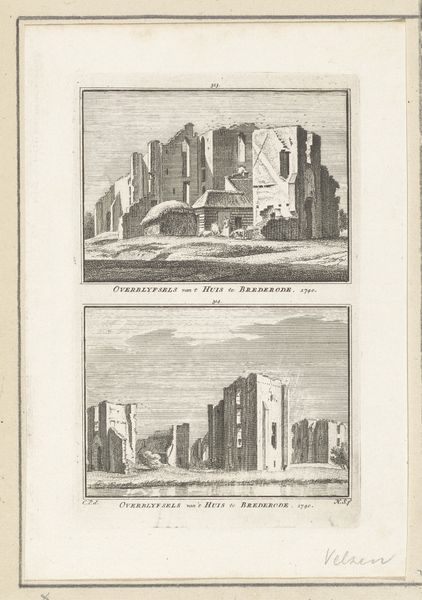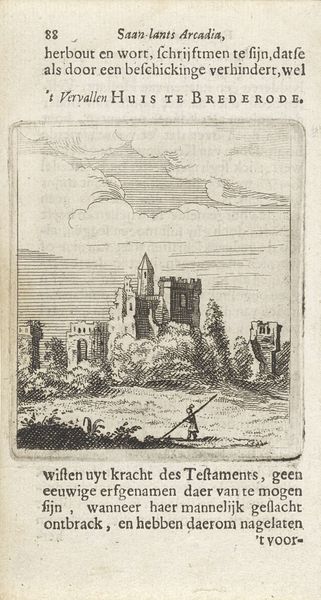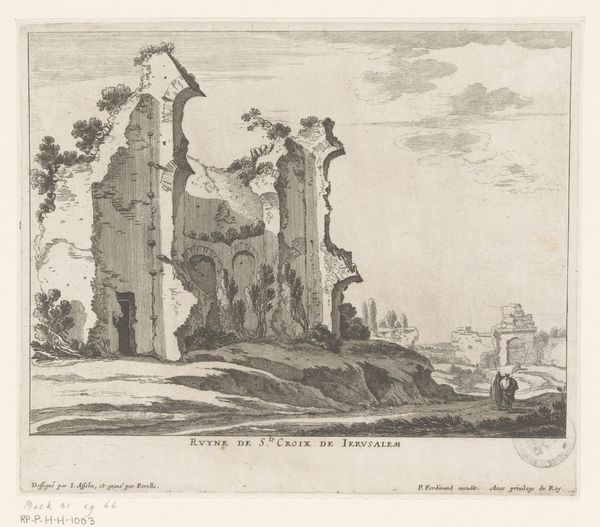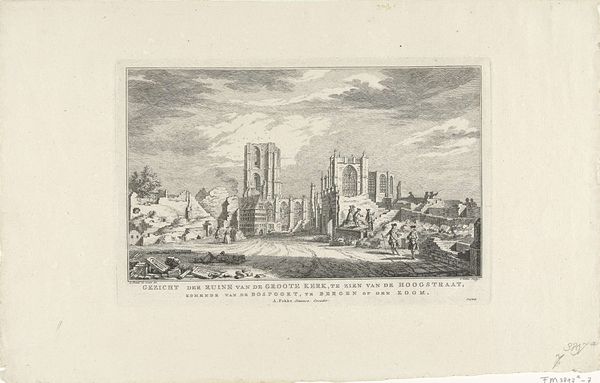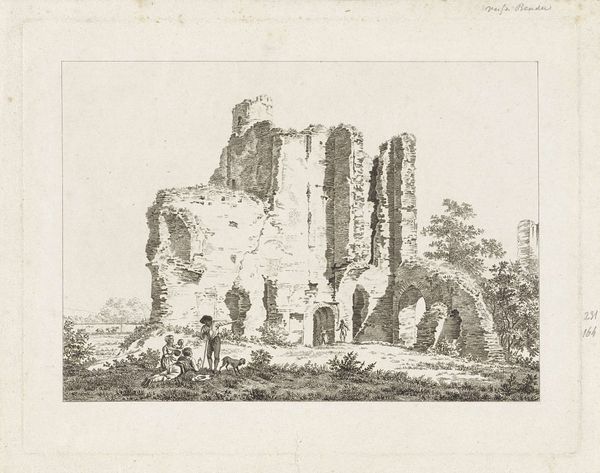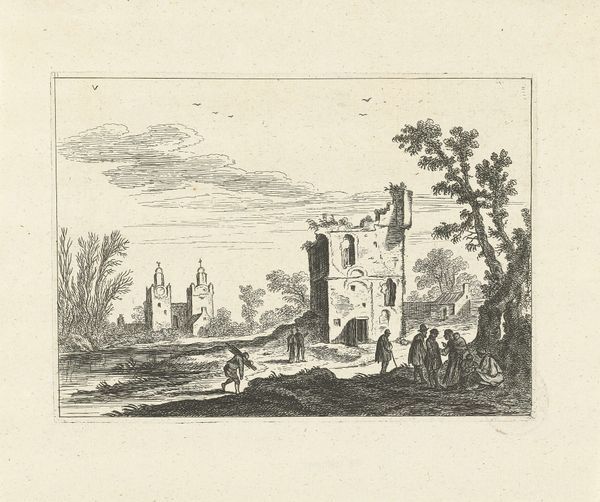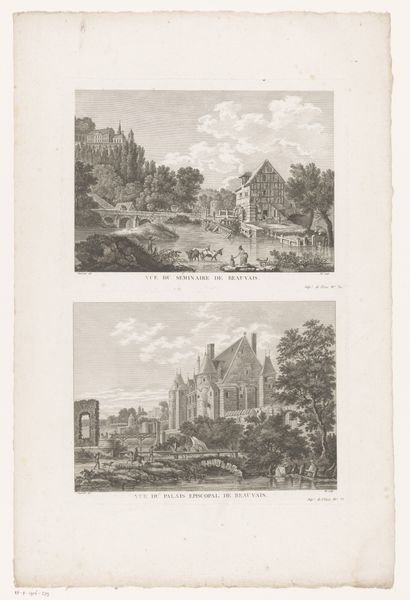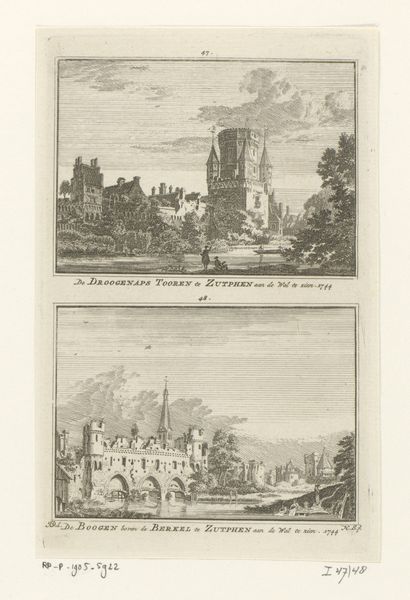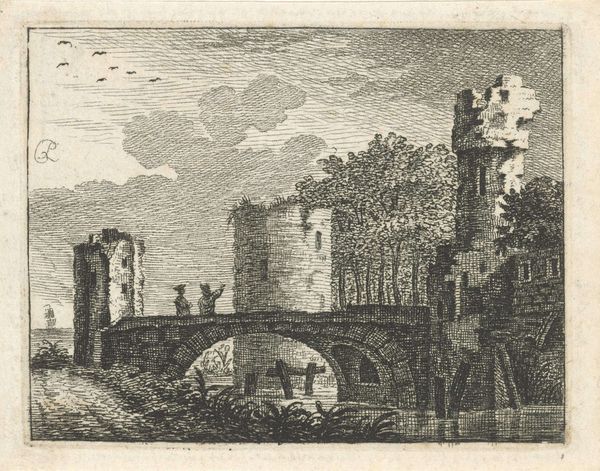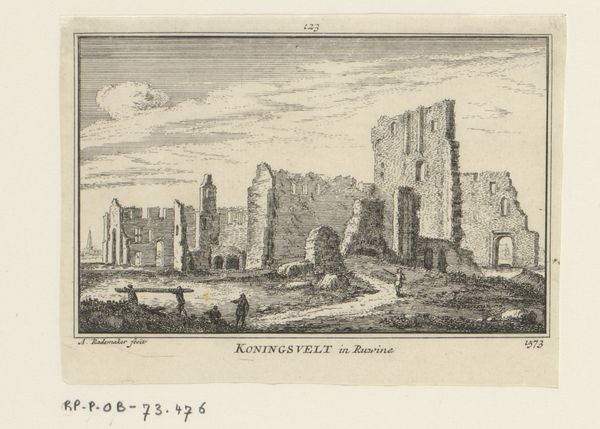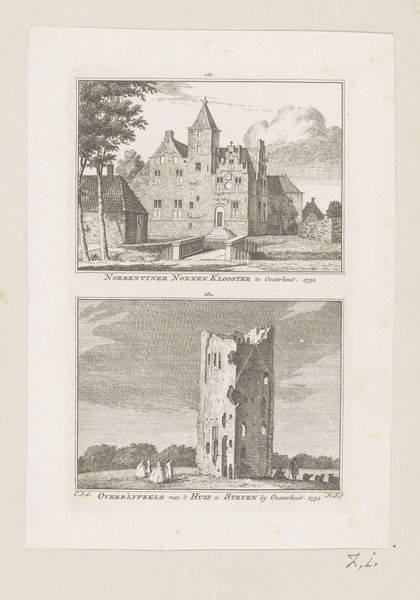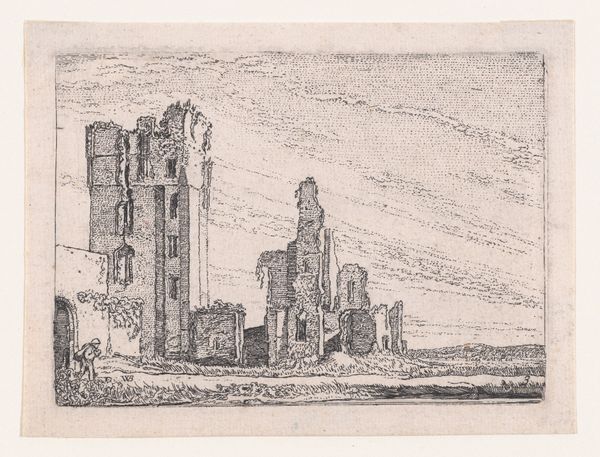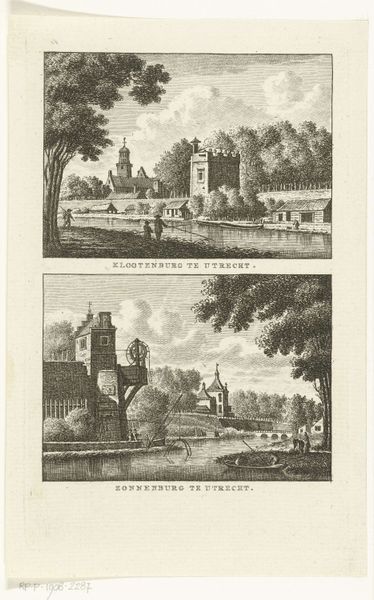
Twee gezichten op de ruïne van Huis ter Kleef te Haarlem, 1660 en 1661 1725 - 1803
0:00
0:00
Dimensions: height 81 mm, width 113 mm, height 83 mm, width 112 mm
Copyright: Rijks Museum: Open Domain
Curator: This is “Twee gezichten op de ruïne van Huis ter Kleef te Haarlem, 1660 en 1661” by Abraham Rademaker, likely created sometime between 1725 and 1803. It combines drawing, etching, engraving, and ink to capture a dual perspective of a ruin. Editor: Oh, wow. It’s melancholic, isn’t it? Seeing these crumbling walls. The landscape, rendered with such fine lines, amplifies that sense of abandonment and time’s relentless march forward. Makes you wonder about the stories that were held within those stones. Curator: Indeed. Rademaker’s choice to depict the ruin from two angles allows us to contemplate the layers of history and memory embedded in this space. The images have that certain something characteristic of Baroque style landscape— Editor: It's like history is performing a kind of striptease, teasing with glimpses of a forgotten world. And the detail! The textures Rademaker manages to achieve with those lines is incredible; you can almost feel the crumbling stone under your fingertips. It gives a powerful sense of depth to this house's fall from grace. Curator: Rademaker was deeply interested in historical sites. Remember, houses as built environments have consistently signified status and control across time. Seeing the deconstruction and weathering here presents a narrative arc— Editor: Which gives it a weird, irresistible beauty! Something haunting about finding that beauty within decay and, honestly, such quiet, subdued destruction. What kind of feeling do we experience when something disappears forever, leaving its mark on time? Curator: What intrigues me is Rademaker's awareness of the shifting interpretations we assign to spaces as they transform across eras, mirroring society's own evolving narrative structures. What we *believe* about spaces like these can impact social change and political agendas… Editor: So much conveyed within what seems at first glance a simple depiction of ruins. Rademaker definitely invites us to imagine the narratives woven into this space. History isn't just about remembering dates, it's also about understanding our shared human experience, our continuous building and crumbling. Curator: A poignant reminder. This artwork certainly offers a unique dialogue between the visible past and our ever-evolving present. Editor: Absolutely, a crumbling echo of a life now gone, etched with delicate melancholy, still resonating centuries later. I keep wondering, what became of that house?
Comments
No comments
Be the first to comment and join the conversation on the ultimate creative platform.

